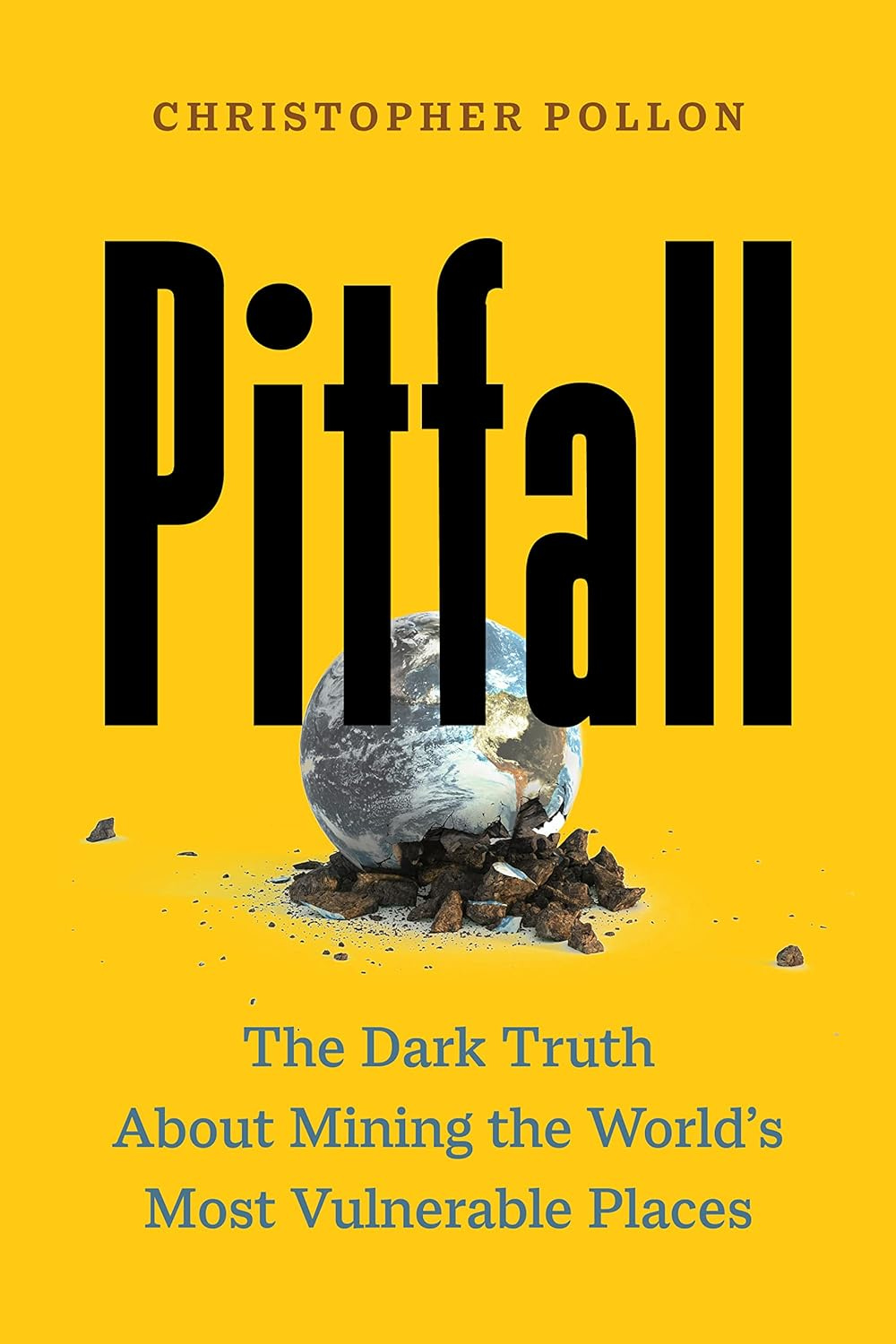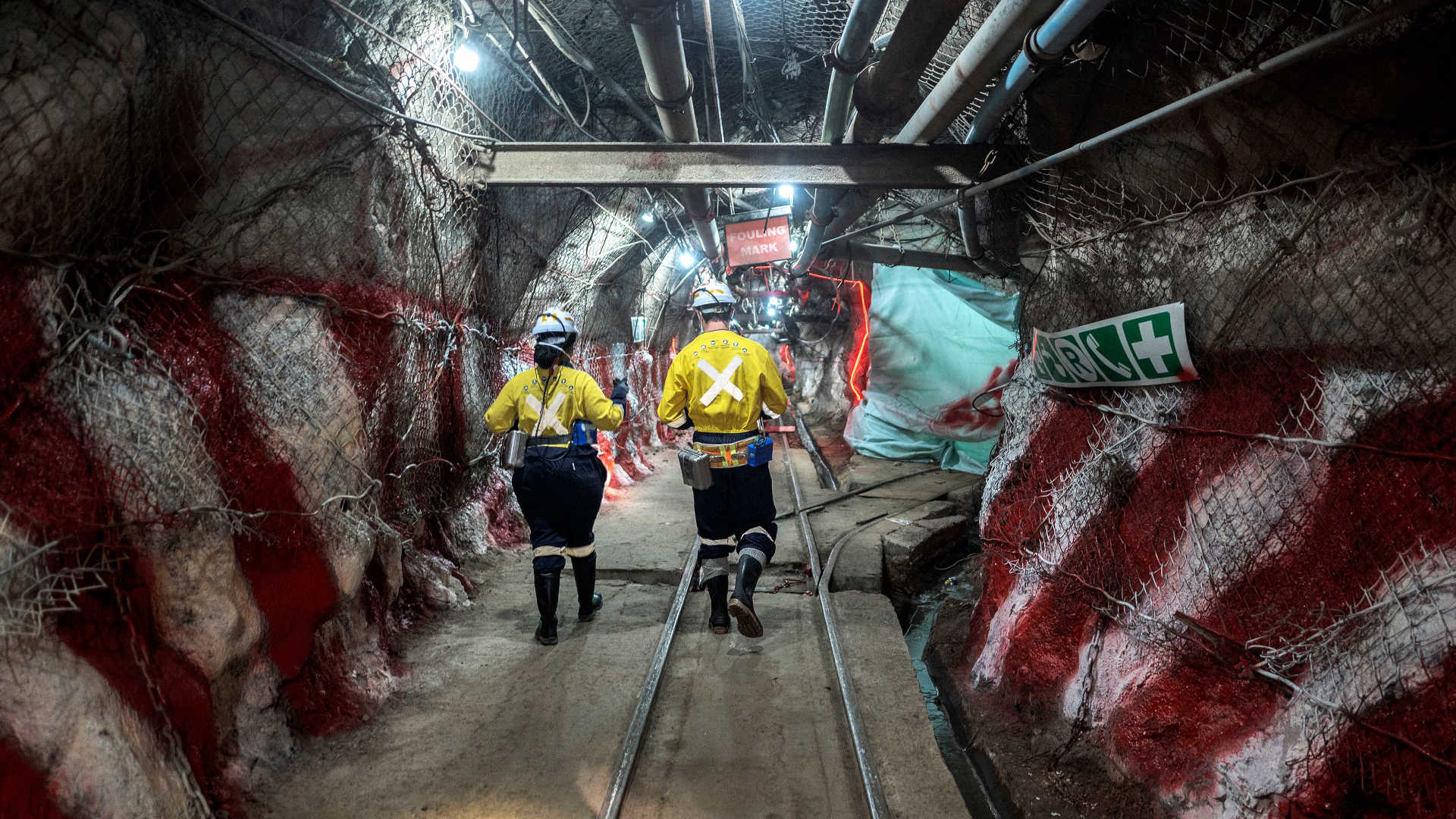In the decades to come, as the easiest-to-mine metal deposits are tapped out, the quest for metals to supply the clean energy transition will force us ever further afield. To more remote and politically unstable places on land and further underground, to the deepest seabed, and perhaps even beyond the limits of the Earth altogether — to the moon, and near-Earth asteroids and comets. And unless business as usual can change, our future over the shorter term will be to venture into ever deeper, darker, and riskier places, creating new sacrifice zones in the Global South, where most of the best earthly deposits remain.

The accompanying article is excerpted and adapted from “Pitfall: The Race to Mine the World’s Most Vulnerable Places,” by Christopher Pollon. (Greystone Books, 289 pages.)
Where it is technically possible, we will go ever deeper into the Earth’s crust to access metal-rich ores. Many of the biggest open-pit mines of the world — Chuquicamata in northern Chile, Bingham Canyon in Utah, and Grasberg in western New Guinea — have gone as deep as they can safely go. Beyond one kilometer of depth (0.6 miles), the slopes of an open pit can become increasingly unstable; to tap the deep roots of metal deposits, miners now plumb the depths underground.
No other mining operation on Earth yet compares to South Africa’s Mponeng gold mine, the world’s deepest, about 40 miles southwest of Johannesburg. Mining to a depth of almost 2.5 miles — the equivalent of nearly 10 Empire State Buildings stacked end to end — thousands of workers navigate 236 miles of subterranean tunnels, in an operation that consumes more annual energy than New Orleans.
Deep-crust mining forces engineers to confront a long list of potentially catastrophic events and phenomena — high temperatures, rock bursts, gas outbursts, and a multitude of other hazards that result from blasting and removing rock at great depth. “A deep mine is a truce that will always break,” writes Matthew Hart, author of “Gold: The Race for the World’s Most Seductive Metal,” of his own visit to Mponeng. By the time he had traveled by elevator 2.3 miles below the surface, the rock was 140 degrees Fahrenheit to the touch, with humidity at a soupy 95 percent.
South Africa’s biggest gold mining company, Harmony Gold, operates here in an environment where almost nothing can survive on its own, with one strange exception. Scientists gathered DNA from water collected at Mponeng in fractures 1.7 miles deep and found that a single bacterium accounted for 99.9 percent of the microorganisms present. Candidatus Desulforudis audaxviator is known as an “extremophile”: an organism that can survive under seemingly impossible conditions — permanent darkness and extreme heat, for example — living an independent lifestyle by making everything it needs itself.
“A deep mine is a truce that will always break.”
To make the same depths survivable for humans at the time of Hart’s visit, the company was manufacturing 6,000 tons of ice a day on the surface, mixing it with salt to create an icy slush, and piping it through the mine, using fans to circulate the cooling air. Every day almost 6,500 tons of rock is blasted and removed from this underground labyrinth comparable to New York City’s subway system: The trouble with that, writes Hart, is that “the laws of compressive force dictate that the rock will try to close the spaces” created by all that mining.
At least 600 times a month, he writes, a seismic event shudders through the mine: “Sometimes the quakes cause rock bursts, when rock explodes into a mining cavity and mows men down with a deadly spray of jagged rock. Sometimes a tremor causes a ‘fall of ground’— the term for a collapse. Some of the rock bursts had been so powerful that other countries detecting the seismic signature had suspected South Africa of testing a nuclear bomb.”
A plan to extend the mine further beneath the Earth’s surface was abandoned by the mine’s previous owner; by August 2023, the mine’s current owner had announced a new expansion, including renewed plans to extend the depth of the mine.
Under the best of circumstances, there are hard limits on how low we can go: The Earth’s crust extends downward as deep as 30 miles beneath land and 6 miles under the seabed. A 1972 exploratory hole dug by oil drillers in Oklahoma went nearly 6 miles deep, encountering pressure nearly 2,000 times greater than the atmospheric pressure on the surface; work stopped when a 475-degree-Fahrenheit molten sulfur deposit destroyed the drill bit.
The record for depth goes to the Kola Superdeep Borehole, a Soviet-era scientific experiment that drilled 7.6 miles into the Kola Peninsula in the Russian Arctic. A number of factors made the drilling stop: lack of funds amid a crumbling Soviet empire, much higher temperatures than expected (over 350 degrees Fahrenheit), and a surprising decrease in the density of the Earth, which combined with the heat made the rock behave more like plastic, making drilling virtually impossible.
The Resolution project in Arizona, a massive proposed underground mine that could one day supply 25 percent of U.S. copper demand, has Rio Tinto and partner BHP planning to spend up to $8 billion to mine at depths of more than 1.2 miles, where the temperatures rise to over 175 degrees Fahrenheit.
By necessity, the underground mining will be largely automated, with tens of thousands of electronic sensors and so-called analytics engines monitoring everything from explosives to the movement of autonomous vehicles. But this “mine of the future” must confront even greater challenges than the crushing depths: The project has been opposed by a majority of Arizona’s Indigenous groups, including the San Carlos Apache Tribe, whose ancestral lands touch the monster copper deposit. The biggest challenge to mining so deep into the Earth is usually physics, but in this case, it is earning a social license on the surface.
As we mine ever deeper and riskier places with the help of new technologies, our mines will become increasingly devoid of humans. By the mid-2030s, technology could be advanced enough to replace almost a third of human jobs. Mining is already on track to becoming automated, thanks to driverless trucks and machinery, and the rise of artificial intelligence, or AI, and machine learning, which will enable autonomous equipment to progressively improve its performance over time.
In realizing this transition, mines of the future will increasingly employ the concept of “swarms” to perform tasks once done by humans. Imagine large numbers of tiny robots, driverless trucks, stands of metal-sucking plants, and even bacteria doing the work of mining without the direct hand of people. Whether it’s on the ocean floor or in deep-crust mines too hot for workers, swarms of small machines can be deployed on the same organizing principle as an ant colony.
The biggest challenge to mining so deep into the Earth is usually physics, but for the Resolution project in Arizona, it is earning a social license on the surface.
When ants leave their nests to scout for food, they drop pheromones — little bits of scent — which other ants will follow; individuals in the swarm pick up on cues left by their neighbors, which help instruct them on what to do next. This system of organization is already being applied, in experiments, to the task of hauling ore by truck out of spiraling open pits, one of the biggest energy expenditures of a large mine.
Instead of employing a small fleet of house-sized trucks to haul ore, a company might employ a much larger fleet of relatively small driverless trucks, operating as a swarm — the trucks communicate with each other by radio signal, but the system basically operates on its own, reacting to changes in the environment.
“With the idea of swarms, there is no leader,” says Scott Dunbar, a University of British Columbia mining professor focused on the future of mining. “The members of the swarm work on cues. If a truck dies, it dies. There are so many of them it doesn’t matter.”
This concept can also apply to plants and bacteria. Certain species of plants and trees can be planted en masse over low-grade surface ores or metal-contaminated soils, where they accumulate metals in their tissues and sap, effectively tapping solar energy to generate what is called bio-ore. Such “cropping for monetary return” has been successfully applied to platinum group metals (including platinum, palladium, and ruthenium), gold, and nickel — including the latter in New Caledonia, where a tree called Pycnandra acuminata can suck up so much metal that its bark resin contains one-quarter nickel.
Not only are many bio-ores virtually sulfur free, writes the author of one study, their smelting requires less energy than conventional ores. Such an environmentally friendly approach has huge potential to exploit low-grade soils that surround ore bodies, and to extract toxic elements like arsenic, cadmium, and selenium from tailings and mine-contaminated soils.
The relatively lucrative, low-skilled jobs that communities in mining zones have historically used to justify the acceptance of social and environmental impacts will disappear.
Certain bacteria can decompose ore to obtain energy and food, excreting metals like copper that can be collected and processed. (For over a decade such bacterial leaching has been employed at the Escondida copper mine in Chile.) Bacterial leaching remains a slow process — too slow for many mining companies — but work is ongoing at the University of British Columbia, a major mining intelligence hub, to decipher what is becoming known as the mineral microbiome. By better understanding the microorganisms that naturally coexist with valuable ores, the hope is to employ them to do our bidding.
Navigating these technologies will increasingly require workers with specialized technological education, putting good jobs out of reach for many living in mining zones, particularly in the Global South. The relatively lucrative, low-skilled jobs that communities in mining zones have historically used to justify the acceptance of social and environmental impacts will disappear. Like the job of driving a huge haul truck — an occupation that is dangerous, monotonous, and relatively well paid.
Mining companies will promote increased automation as a boon to health and safety, because there will be fewer humans on mine sites to get hurt. But as technology replaces the menial jobs of the past, these companies will need to face the prospect of alternate forms of compensation in mining zones — perhaps making payments as community dividends, equity ownership, or even a universal basic income — in order to keep the peace with locals.
Christopher Pollon is an independent journalist who reports on the politics of natural resources, focusing on mining, oceans, and energy. His work has appeared in National Geographic, VICE, The Walrus, The Tyee, and The Globe and Mail, among other publications. He is also the author of “The Peace in Peril: The Real Cost of the Site C Dam.” He lives in Vancouver.










